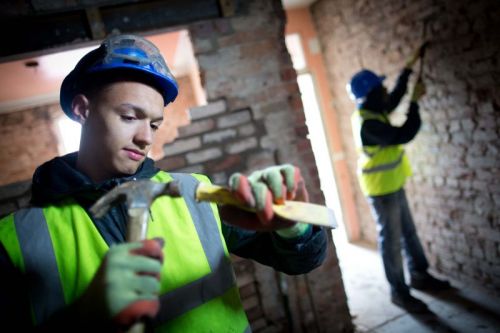New apprentice levy funding model
On 12 Aug 2016, the Department of Education set out proposals for the new apprenticeship levy which will come into force in May 2017. This will require UK firms with a wage bill of over £3m per year to contribute 0.5% of annual pay (minus an allowance of £15,000) into the training fund.
Apprenticeships will be graded in 15 new bands with funding allocated in each from £1,500 to an upper limit of £27,000, depending on the type of training.
Under the proposals, employers that are too small to pay the levy - around 98% of employers in England - will have 90% of the costs of training paid for by the government.
Alasdair Reisner, chief executive of Civil Engineering Contractors Association (CECA), said: “It's still very early and we are looking over the details in depth now, but we are getting a feeling that some of the bands for businesses or the construction sector look quite low, which may have a negative impact on the construction industry and its ability to fill apprenticeship figures.”
Funding for levy-paying employers who want to spend more on training than is in their ‘digital account’, will make up 90% of their additional apprenticeship training costs.
As an incentive for employers with fewer than 50 employees to take on apprenticeships, the government will pay 100% of their training costs.
Extra support worth £2,000 per trainee will also be available for employers and training providers that take on 16-18 year old apprentices or young care leavers.
An online calculator has been created by the government so that employers can work out how much levy they will be required to pay, and how they could use their digital funds to pay for future training.
Construction Industry Training Board (CITB) director of policy Steve Radley said, “This announcement brings mixed news for construction. The co-investment rate for non-levy payers is lower than expected, at 10%, with the remaining 90% covered by funds raised by the levy. It’s also encouraging to see that smaller firms will be exempt from co-investment if they take on a 16-18 year old apprentice. With more than half of all construction apprentices under the age of 19, this is a win for the industry … But there is still work to do to make sure ensure funding bands reflect the actual costs of training, so that apprenticeships are affordable for companies of all sizes.”
Apprenticeships and skills minister Robert Halfon said, “The apprenticeship levy will help create millions of opportunities for individuals and employers. This will give our young people the chance they deserve in life and to build a highly-skilled future workforce that the UK needs.”
CBI director-general Carolyn Fairbairn said, “The Levy is too narrowly defined. It covers only one type of training and employers can only reclaim off-the-job costs. As a result, valuable forms of training risk being cut back, with quantity put ahead of quality. The May 2017 start date will not give firms sufficient time to prepare, so we urge the Government to delay implementation."
For more information, see the Government website.
[edit] Related articles on Designing Buildings
- Apprenticeship Levy transfer service.
- Apprenticeships come of age.
- Apprenticeships levy.
- Civil engineer quashes apprenticeship myths.
- Construction apprentice earnings.
- Construction apprenticeships.
- Construction Industry Training Board CITB.
- Construction skills shortage still stifling growth.
- National Infrastructure Plan for Skills.
- Payments for recruiting new apprentices.
- Protection for apprenticeships.
- Tackling the construction skills shortage.
Featured articles and news
Moisture, fire safety and emerging trends in living walls
How wet is your wall?
Current policy explained and newly published consultation by the UK and Welsh Governments.
British architecture 1919–39. Book review.
Conservation of listed prefabs in Moseley.
Energy industry calls for urgent reform.
Heritage staff wellbeing at work survey.
A five minute introduction.
50th Golden anniversary ECA Edmundson apprentice award
Showcasing the very best electrotechnical and engineering services for half a century.
Welsh government consults on HRBs and reg changes
Seeking feedback on a new regulatory regime and a broad range of issues.
CIOB Client Guide (2nd edition) March 2025
Free download covering statutory dutyholder roles under the Building Safety Act and much more.
AI and automation in 3D modelling and spatial design
Can almost half of design development tasks be automated?
Minister quizzed, as responsibility transfers to MHCLG and BSR publishes new building control guidance.
UK environmental regulations reform 2025
Amid wider new approaches to ensure regulators and regulation support growth.
The maintenance challenge of tenements.
BSRIA Statutory Compliance Inspection Checklist
BG80/2025 now significantly updated to include requirements related to important changes in legislation.
Shortlist for the 2025 Roofscape Design Awards
Talent and innovation showcase announcement from the trussed rafter industry.























